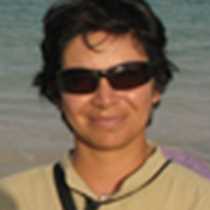Española Island
Early this morning we reached the oldest island in the archipelago, located all the way in the south-easternmost corner of the Galápagos, which is also one of the prettiest.
We began our day visiting an outstanding site named Gardner Bay: a location full of friendly sea lions, colourful marine iguanas, very active finches and extremely curious Española mockingbirds. All this against a backdrop all of turquoise waters, white organic sand and bright green vegetation; especially at this time of the year when the rainy season brings nice warm tropical waters and sprinkles of rain to these areas.
We also enjoyed a fascinating snorkelling outing to Turtle Rock, a picturesque islet just off the far end of the beach, an incredible place full of large schools of tropical fishes and an amazing variety of marine invertebrates, many of them unique to the islands.
We repositioned overnight to the unparalleled Punta Suarez, on the western side of Española, and spent our last afternoon exploring this beautiful site a variety of ways. There was a faster-paced hike through the abandoned nesting grounds of the Galápagos albatross, soon to return to the island, then back along the coast and through the nesting area of the blue-footed boobies, Nazca boobies, marine iguanas, and swallow-tailed gulls. Others chose just the coastal walk, through to a blowhole that was particularly active in the huge swells of the day and back through all the nesting grounds.
This island has so much wildlife scattered amongst the lava rocks that it is a sanctuary for seabirds, marine mammals, reptiles, and land birds, many of them unique to this place. Truly a grand finale to an unforgettable trip.
Early this morning we reached the oldest island in the archipelago, located all the way in the south-easternmost corner of the Galápagos, which is also one of the prettiest.
We began our day visiting an outstanding site named Gardner Bay: a location full of friendly sea lions, colourful marine iguanas, very active finches and extremely curious Española mockingbirds. All this against a backdrop all of turquoise waters, white organic sand and bright green vegetation; especially at this time of the year when the rainy season brings nice warm tropical waters and sprinkles of rain to these areas.
We also enjoyed a fascinating snorkelling outing to Turtle Rock, a picturesque islet just off the far end of the beach, an incredible place full of large schools of tropical fishes and an amazing variety of marine invertebrates, many of them unique to the islands.
We repositioned overnight to the unparalleled Punta Suarez, on the western side of Española, and spent our last afternoon exploring this beautiful site a variety of ways. There was a faster-paced hike through the abandoned nesting grounds of the Galápagos albatross, soon to return to the island, then back along the coast and through the nesting area of the blue-footed boobies, Nazca boobies, marine iguanas, and swallow-tailed gulls. Others chose just the coastal walk, through to a blowhole that was particularly active in the huge swells of the day and back through all the nesting grounds.
This island has so much wildlife scattered amongst the lava rocks that it is a sanctuary for seabirds, marine mammals, reptiles, and land birds, many of them unique to this place. Truly a grand finale to an unforgettable trip.




